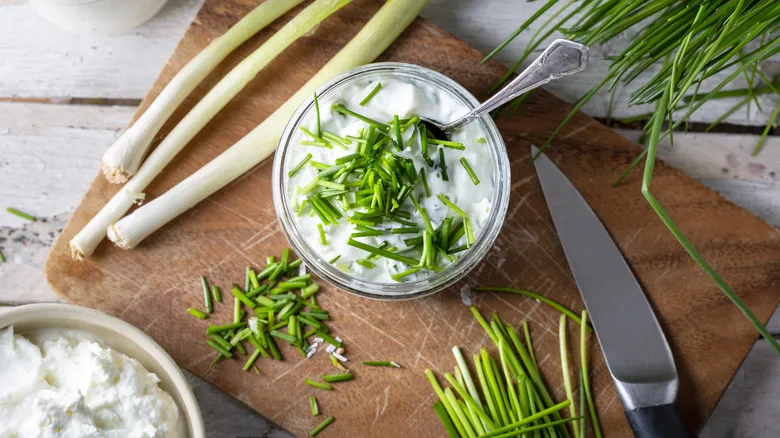Use: Greek yogurt

Greek yogurt is the ultimate substitute for sour cream due to its close resemblance to the original and its versatility in various applications. Both yogurt and sour cream are produced through lactic acid fermentation, but yogurt is made from milk rather than cream. As a result, yogurt typically has a lower fat content, around 10-12%, compared to sour cream, which usually contains about 20% fat. To compensate for this difference, it's best to opt for full-fat Greek yogurt, and you can even mix in a bit of heavy cream to achieve a richness and creaminess that more closely resembles sour cream.
What sets Greek yogurt apart from other yogurts is that it has had the whey removed, resulting in a thick, creamy consistency akin to sour cream. Other yogurt varieties tend to be thinner and more liquid, making them less suitable for certain uses, such as topping tacos, although they might work for some baking applications. If you prefer to use regular yogurt, you can strain it through a coffee filter or cheesecloth to eliminate the whey. Just be sure to choose plain, unflavored yogurt without any artificial thickeners.
Skip: mayonnaise
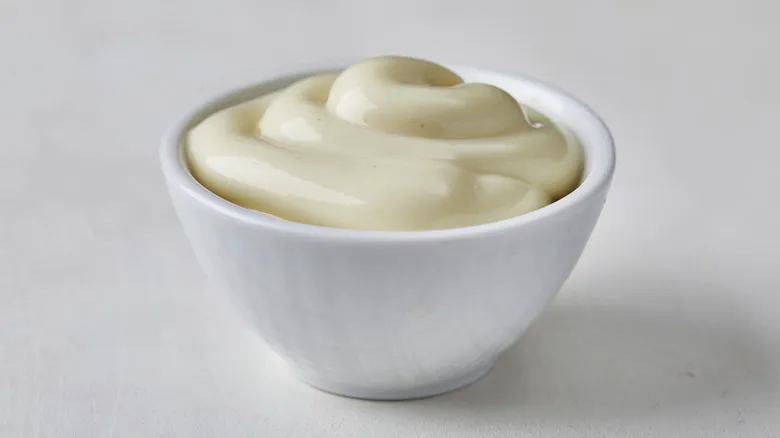
Sour cream and mayonnaise may share a similar color and texture, but their similarities largely end there. Mayonnaise is composed of entirely different ingredients—eggs and oil—resulting in distinct culinary characteristics. A significant concern is that mayonnaise is much richer than sour cream, containing 70-80% fat compared to sour cream's 20%. This difference means that substituting mayo for sour cream in dips, dressings, or condiments can lead to overly indulgent dishes with a different mouthfeel.
In baking, mayonnaise poses an even greater challenge. Sour cream serves three key purposes in baked goods: it adds moisture, contributes fat for a rich flavor and texture, and provides acidity, which helps soften gluten and activates baking soda. While mayonnaise can add moisture and fat (often too much), it lacks sufficient acidity to activate baking soda. Without a strong acidic component, baked goods relying on baking soda won't rise properly. Therefore, it's advisable to consider the next sour cream substitute on the list.
Use: crème fraîche
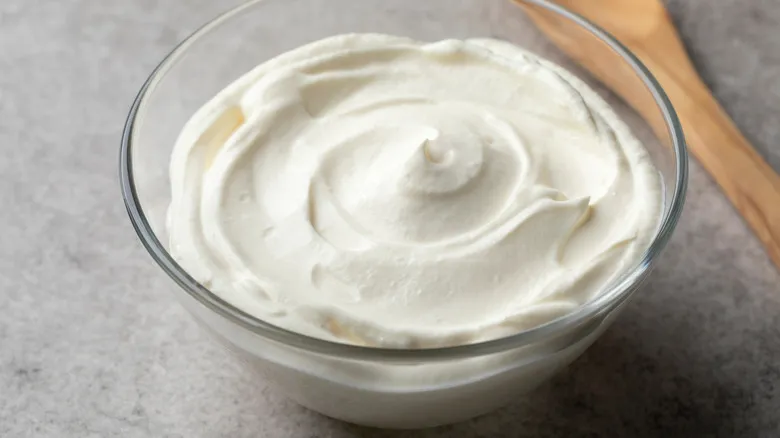
It's true that the likelihood of someone having crème fraîche on hand (without sour cream) is probably low. It's not a staple in most households and tends to be pricier than sour cream. However, if you do have some crème fraîche, it serves as an excellent substitute for sour cream and, in some instances, may even surpass it.
Crème fraîche is very similar to sour cream, as both are derived from fermented cream. The key distinction is that crème fraîche is made from cream with a higher fat content (around 30% fat compared to sour cream's 20%) and has a milder acidity. You can increase the acidity by adding a splash of lemon or lime juice to your dish, but it may not be the ideal choice for baking. Conversely, crème fraîche excels at thickening creamy sauces and soups since it is less likely to curdle.
Skip: buttermilk

Buttermilk can serve as a reasonable alternative to sour cream in baked recipes, but that's where its usefulness ends. It shares a similarly tangy flavor with sour cream, yet with an average fat content of about 1%, buttermilk is actually lower in fat than most types of milk and significantly less fatty than sour cream. Additionally, there's the clear issue of texture; buttermilk is quite thin and runny, making it unsuitable as a condiment or for use in sauces and dips.
Some bakers prefer buttermilk as a substitute for sour cream due to its comparable acidity, as both typically have a pH level around 4.5. When baking, you can mitigate the consistency issue by using ¾ cup of buttermilk for every cup of sour cream specified in the recipe. However, this substitution comes with risks, as you'll be lacking the crucial fat content that contributes significantly to both flavor and texture.
Use: coconut cream

If you're in search of a vegan or lactose-free alternative to sour cream, coconut cream is an excellent choice. It resembles coconut milk but has a higher concentration of coconut, resulting in a thicker and creamier texture. When you open a can of coconut milk, the thick, creamy layer on top is coconut cream. Simply scoop it off and mix in some lemon juice (1 tablespoon per cup of coconut cream) to add the necessary acidity, and you're all set.
You can also purchase cans of pure coconut cream, which allows you to have more without the hassle of skimming and straining coconut milk. It's a great addition to any dairy-free kitchen. Once combined with lemon juice, coconut cream can be used in any recipe that calls for sour cream, such as dressings, dips, and baked goods. Just keep in mind that it will impart a coconut flavor, so consider how that will complement the other ingredients in your dish.
Skip: any kind of cheese
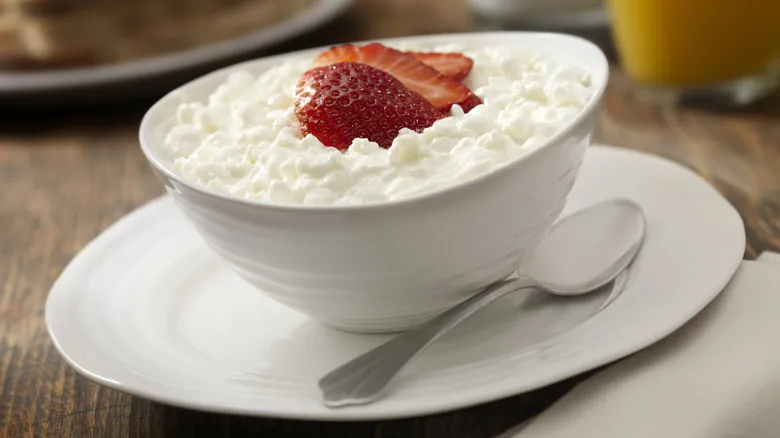
Many websites suggest using cream cheese, cottage cheese, or mascarpone as alternatives to sour cream, but it's advisable to avoid these options. While you can adapt fresh cheeses to mimic sour cream, it requires quite a bit of effort. Cream cheese and mascarpone are significantly thicker than sour cream, necessitating the addition of milk or cream to achieve the right consistency. Additionally, they lack the tanginess of sour cream—mascarpone, in particular, tends to be quite sweet—so you'll also need to incorporate lemon juice.
Cottage cheese presents even more challenges as a substitute for sour cream. It doesn't have the necessary tang, requiring lemon juice as well, and you'll end up with extra dishes to clean since cottage cheese is lumpy. To achieve a smoother texture, you'll need to blend it in a food processor or blender. At that point, it might just be simpler to head to the store and buy some sour cream.
Recommended

12 Things You Didn't Know Your Ice Cream Maker Could Do

Metal Knives Are Spoiling Your Avocados. Here's What To Use Instead

The Best Way To Cook Frozen Brussels Sprouts So They Taste Fresh
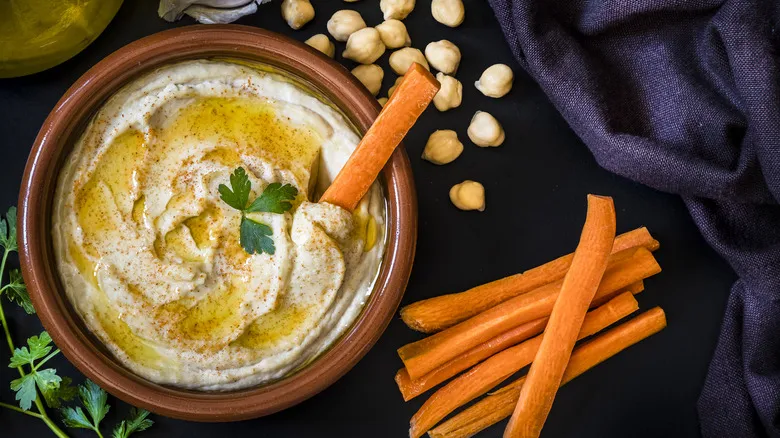
How Long An Open Container Of Hummus Will Stay Fresh
Next up

